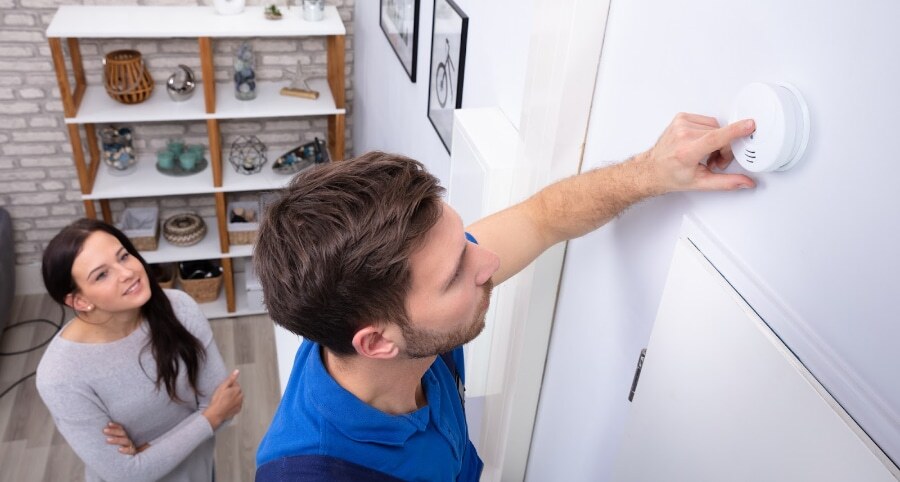Where to install carbon monoxide detectors in your Indianapolis home

Carbon monoxide is dissimilar to usual risks home occupants confront as you are unable to detect it visually or by smell. Even though it’s not identifiable by your senses like smoke, fire, or flooding, you may still simply and effectively shield yourself with CO detectors. Discover where to install carbon monoxide detectors in your Indianapolis home and investigate the benefits of incorporating them in your inclusive security plan.
Where is CO found?
Owing to its lack of color and smell, carbon monoxide is often referred to as the silent killer. It materializes as a result of an incomplete burning of fuels in appliances like gas stoves, fireplaces, furnaces, and generators. Most households won’t experience problems with their fuel-burning appliances if they maintain them regularly. But if you forget about regular service or don’t have necessary ventilation, a collection of this potentially life-threatening gas can take place.
Early signs of carbon monoxide poisoning include headaches, dizziness, nausea, and vomiting. These usually arise at lower quantities of CO. Exposure to higher concentrations for a longer timeframe can lead to cardiopulmonary arrest and death.
Tips on where to install Indianapolis carbon monoxide detectors
Each home need to have at least one CO detector. In truth, you should install them on all floors, and that includes basements where many fuel-burning appliances are found. Use these recommendations on where to install Indianapolis carbon monoxide detectors:
-
Place one within 10 feet of sleeping areas. This location is vital, so affix it here when you only get a single carbon monoxide detector.
-
It’s preferred to have a carbon monoxide detector on all stories of your property, specifically on ones with fuel-consuming appliances.
-
To avoid false alarms, place them a minimum of 10 feet from producers of carbon monoxide, such as fireplaces. A non-hazardous amount of CO may be released when fuel-burning appliances kick on.
- Avoid spots next to windows and doors, as external air will lessen the effectiveness of the unit.
-
Put carbon monoxide detectors in rooms above attached garages.
As you would with smoke detectors, inspect your CO units regularly, wipe away dust and grime as needed, and avoid accidentally putting something in front of them. In general, switch out your detectors every five years.
Enhance safety by incorporating CO detectors into your home’s security system
Today’s home security systems offer more layers of protection than you’ve ever had before. In fact, you can incorporate carbon monoxide detectors and other safety alarms directly into your system. You and your monitoring experts will be alerted if your device signals danger. This professional support is terrific in the event you don’t hear the alarm or if you’re away from home.
Enhance safety by incorporating CO detectors into your home’s security system
Today’s home security systems offer more layers of protection than you’ve ever had before. In fact, you can incorporate carbon monoxide detectors and other safety alarms directly into your system. You and your monitoring experts will be alerted if your device signals danger. This professional support is terrific in the event you don’t hear the alarm or if you’re away from home.
Get carbon monoxide detectors with your Vivint smart home in Indianapolis
